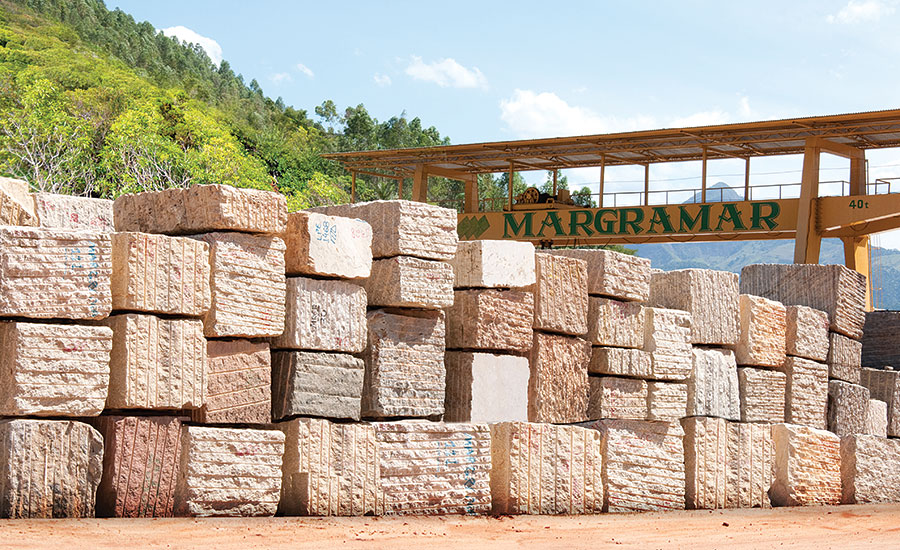Unveiling the Mysteries of Granite Quarrying: Where Stamina and Style Meet
The globe of granite quarrying is a realm where the raw strength of nature assembles with human creativity to develop structures that stand the examination of time with an air of elegance. From the depths of quarries to the careful sprucing up in workshops, the procedure of changing granite right into architectural marvels is a complex dance of custom and advancement. As we peer right into the midsts of this old craft, we start to reveal the surprise intricacies that shape the very essence of our built environment.
The Origins of Granite Quarrying
In the annals of architectural history, the origins of granite quarrying are shrouded in a tapestry of ancient workmanship and geological wonders. Going back to old Egypt and Mesopotamia, the removal of granite from quarries noted the start of a journey that would ultimately lead to the development of a few of the world's most iconic frameworks.
Granite quarrying's origins can be mapped to the knowledgeable craftsmens that acknowledged the rock's durability and visual charm. With a mix of primitive devices and sheer resolution, these very early quarry employees unearthed granite blocks that would certainly end up being the foundation of civilizations.
As worlds progressed, so did the methods of quarrying granite. The Romans, renowned for their design expertise, created innovative techniques for drawing out granite to build monoliths, holy places, and roadways that stood the test of time.
The heritage of these old quarrying practices proceeds to form modern style, with granite staying a symbol of toughness and elegance in building and construction tasks around the world. (granite quarries in south africa)
Tools of the Quarrying Profession
The advancement of granite quarrying methods from old people to contemporary times highlights the critical duty played by the tools of the quarrying profession in shaping the industry's methods. In ancient times, quarrying devices were basic, often containing chisels, hammers, and wedges made from products like bronze or iron. These tools needed significant workforce and time to extract granite blocks from quarries.

Additionally, the introduction of pneumatic devices and high-powered equipment has actually substantially minimized the physical labor needed in quarrying operations, enhancing worker safety and security and performance. As the quarrying sector proceeds to innovate, the tools of the profession stay at the leading edge of driving development and shaping the future of granite removal.
Drawing Out Blocks of Granite
Making use of precision equipment and advanced strategies, the extraction of granite obstructs from quarries has come to be a sophisticated procedure in the modern quarrying sector. Controlled blowing up techniques are then used to break apart the granite right into manageable areas.

Polishing and Ending Up Methods
To achieve a remarkable surface on granite blocks, experienced craftsmens utilize a collection of careful polishing and ending up methods. After the first extraction and forming procedures, the granite blocks go through a comprehensive sprucing up phase to boost their natural elegance and toughness. One common approach used in brightening granite is diamond abrasion, where industrial rubies are used to grind and brighten the stone to a smooth surface. This procedure not only develops a lustrous surface area yet likewise makes certain uniformity in shade and texture across the granite block.
In addition to polishing, ending up try these out strategies are applied to additional fine-tune the granite's look. These strategies may include flaming, developing, or cleaning, each offering one-of-a-kind textures and finishes to fit different visual choices. Flaming, for circumstances, entails exposing the granite surface to heats to create a rough, textured surface, suitable for outside applications where slip-resistance is crucial. Honing, on the various other hand, provides a matte finish that is smooth to the touch, perfect for indoor countertops and flooring. By thoroughly selecting and applying these polishing and finishing techniques, artisans can change raw granite obstructs right into elegant items that display both stamina and sophistication.

Ecological Impact and Sustainability
With the growing emphasis on environmental awareness in the sector, granite quarrying practices are progressively inspected for their impact on all-natural resources and long-term sustainability. In addition, the transportation of granite from quarries to processing centers creates carbon emissions, even more contributing to environmental destruction.
To mitigate these effects and ensure sustainability in granite quarrying, industry stakeholders are adopting different steps. Carrying that site out sophisticated innovations to minimize power usage and water use, recovering quarried land for environmental repair, and advertising accountable sourcing methods are some techniques being utilized. Additionally, certifications such as the Forest Stewardship Council (FSC) and the Leadership in Power and Environmental Layout (LEED) assistance consumers identify eco-friendly granite items.
Conclusion
To conclude, granite quarrying is a process that calls for specialized devices and techniques to remove blocks of granite and polish them to a high degree of finish. While the ecological effect of quarrying can be significant, efforts more helpful hints are being made to enhance sustainability practices in the sector. In general, granite quarrying is a fragile balance in between utilizing the toughness and beauty of this all-natural stone while lessening its impact on the atmosphere.